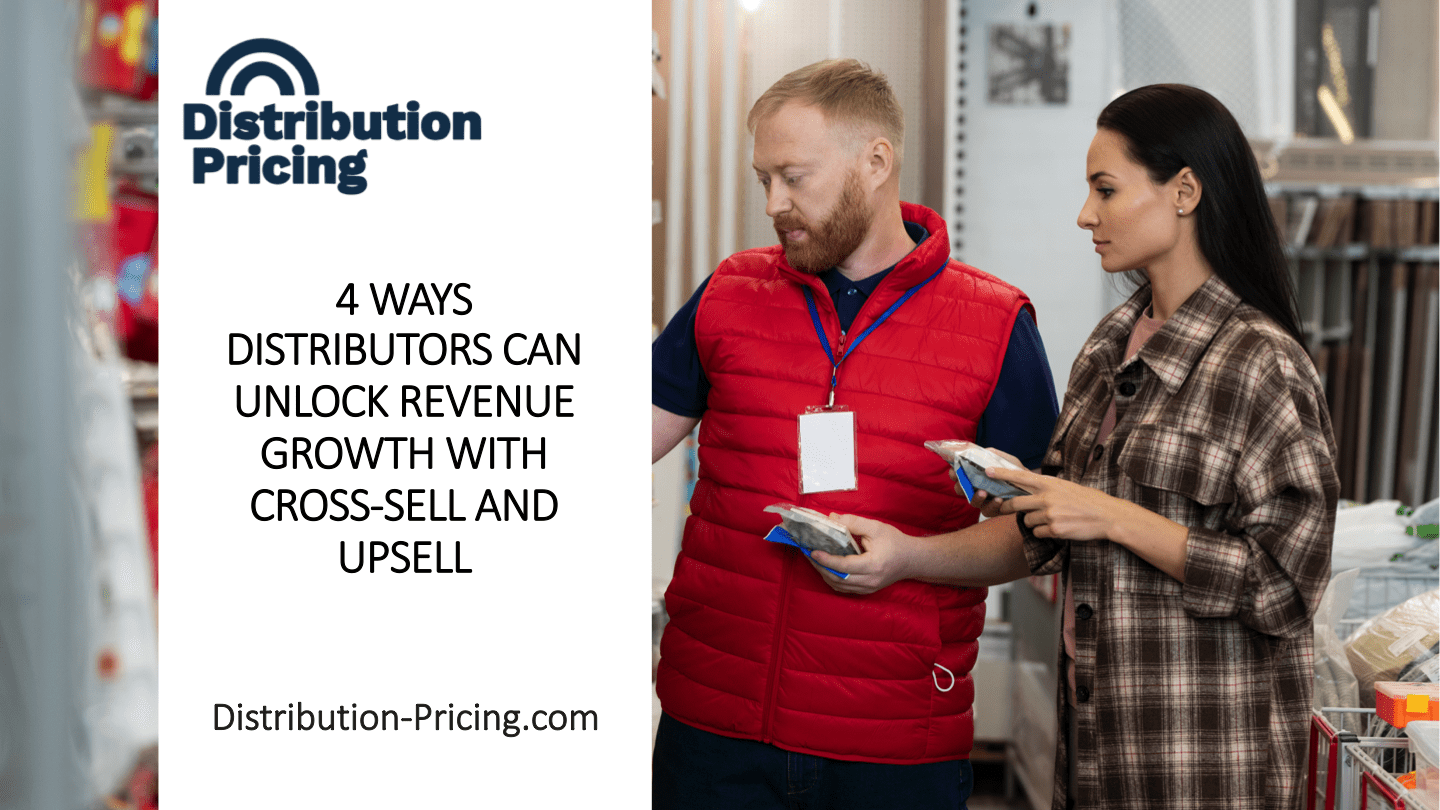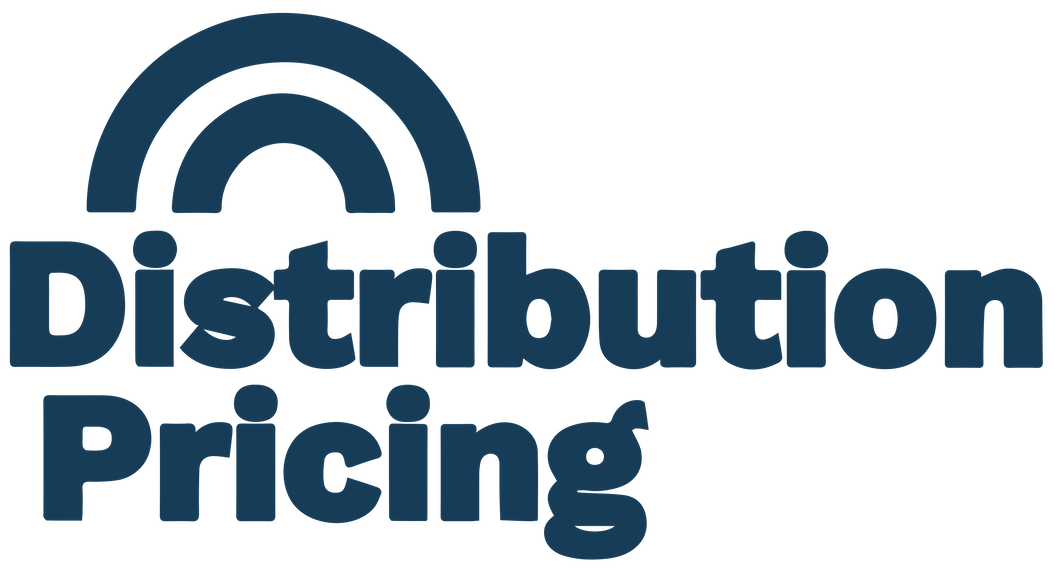Pricing is the battleground where wholesale distributors compete for profitability and market share. More distributors…

4 Ways Distributors Can Unlock Revenue Growth with Cross-Sell and Upsell
As we enter the second half of 2023, pricing teams at B2B distributors are facing a critical turning point. Over the last few years, distributors have grown used to across-the-board price increases that customers had no choice but to accept. For better or worse, the significant inflation during the pandemic that enabled these huge “peanut butter spread” increases have subsided. The Bureau of Labor Statistics reported that year-over-year inflation as measured by the Producer Price Index (PPI) has fallen to 1.1% in May of 2023, a far cry from the peak of 11.7% seen in March of 2022.
Moreover, the supply chain is generally back to pre-pandemic efficiency. Costs related to ocean shipping, over-the-road transportation, and warehousing have dropped below pre-pandemic levels, resulting in increased availability, ease of transport, and in some instances lower prices of supplies.
The two main justifications for increasing prices over the past three years, namely high inflation and rising costs caused by supply chain constraints, are typically no longer valid. In case it isn’t clear, the window for broad, all-encompassing price increases has closed. Distributors must go back to the drawing board to find other ways to grow.
Fortunately, they have a built-in growth trajectory that is often overlooked. Namely, distributors can sell more to their current customers via cross-selling. Recommendations can be generated by leveraging a distributor’s transaction history, customer master, and product master to identify customers that look the same, purchase the same type of products, but have holes in their product spend with you.
When done right, cross-selling provides many benefits for distributors. Capitalizing on cross-selling opportunities help distributors grow average order value, increase share of wallet, drive customer stickiness, and improve ease of business. Not to mention, it establishes distributors as a one-stop-shop. Competent cross-selling is a differentiator that shows distributors know their customers’ business and can help them succeed.
Cross-selling and upselling are powerful strategies for boosting revenue in the distribution industry. By leveraging data analytics, training your sales team, personalizing offers, and optimizing your supply chain, you can maximize these opportunities and drive business growth. Remember, the key to successful cross-selling and upselling is understanding your customer needs and delivering value at every interaction.
We asked Daniel Cakora, Business Consultant at Vendavo, a global market leader in B2B price management and commercial excellence solutions, to provide some of his insights on how to go after new cross-selling and up-selling opportunities.
1. Leverage Data Analytics for Customer Insights
“Data analytics is a game-changer in the distribution industry,” said Cakora. “Data provides valuable insights into customer purchasing behavior, preferences, and patterns.” By leveraging these insights, distributors can identify potential cross-sell and upsell opportunities. For instance, predictive analytics can help you identify which products are frequently bought together, enabling you to develop effective cross-sell strategies.
But isn’t the data you currently track inside of your ERP’s purchasing history enough? Cakora advances that there is a very high return on creating high-resolution, holistic customer profiles.
“I think many distributors still think of a data-driven approach to sales as a little bit cutting edge,” said Cakora. “But the truth is that all buyers now have an expectation that you will anticipate their needs and become more customer-centric in your sales. Understanding your customers isn’t a luxury, it’s a necessity.” One effective method to gain this insight is by building high-resolution customer profiles. These profiles are comprehensive representations of your customers, combining both internal and external data to provide a holistic view. They go beyond basic demographic details like age and location, delving into behavioral patterns, preferences, and even predictive insights.
“High-resolution customer profiles allow businesses to understand their customers on a deeper level,” said Cakora. “These richer profiles reveal what product lines are resonating with particular customers to give you insight into how new sales opportunities could come together and what potential future actions sales reps may want to initiate.” This in-depth knowledge enables businesses to tailor their offerings and communications to individual customer needs, improving engagement, loyalty, and ultimately, profitability.
It all starts with your ability to leverage your own data. Your customer data forms the foundation of high-resolution customer profiles. You should consider transactional data, interaction data, and customer feedback.
- Transactional Data:
- Sales History
- Purchase Frequency
- Volume
- Interaction Data:
- Website Visits
- Click-Through Rates
- Social Media Engagement
- Customer Feedback
- Voice of Customer
- Surveys
- Focus Groups
- Interviews
- Ride-Alongs
Analyzing this data can uncover valuable insights about customer behavior, preferences, and satisfaction levels.
You can enhance your customer picture with external data as well. “While internal data provides a wealth of information it only shows part of the picture,” said Cakora, To build truly holistic customer profiles, businesses should also integrate external data. Cakora points out that there are many external sources a distributor can use to support their cross-selling and up-selling activities. “External data can include market trends, economic indicators, social media sentiment, and seasonal patterns—any external factor that could influence customer behavior. By incorporating these broader context elements, businesses can better predict customer needs and respond proactively.”
The Power of Predictive Analytics
By leveraging advanced analytics and machine learning algorithms on this combined data, businesses can generate predictive insights, forecasting future customer behavior. For example, they might identify which customers are most likely to respond to a cross-sell offer or predict when a customer might be at risk of churning. These predictive insights enable businesses to take proactive measures, enhancing customer experience and driving revenue growth.
Building high-resolution customer profiles is a powerful strategy for any business seeking to enhance its customer understanding. By combining internal and external data, distributors can gain a 360-degree view of their customers. As we’ll see later, this allows you to deliver more personalized, effective interactions and drive larger, more profitable orders.
2. Train Your Sales Team to Identify Opportunities
“Your sales team is on the front line and plays a crucial role in identifying cross-sell and upsell opportunities,” said Cakora. “Invest in training your team to understand customer needs better and recommend relevant products or higher-value alternatives.” Role-playing exercises and customer scenario analysis can be effective training methods based on the connections uncovered in your data.
There are as many different distribution sales models as there are distributors. Cakora provided three specific strategies that distributors can employ to maximize their revenue from existing customers:
- Cross-selling
- Up-selling
- Unit up-selling
Each offers unique opportunities to increase sales and strengthen customer relationships.
Cross-Selling: Enhancing the Customer Experience with Complementary Products
Cross-selling involves suggesting complementary products or services that enhance the value of the item a customer has purchased. Certain products naturally fit together to provide a more comprehensive solution for the customer.
Cross-selling can increase sales but just as importantly it helps your customers get the most out of their main purchase. That expands customer satisfaction and loyalty. “You’re actually improving your customer experience by suggesting complementary products, because their use of those products will be improved.”” said Cakora.
“Imagine that a landscape contractor has just purchased a set of outdoor garden lights,” said Cakora. “A smart cross-sell opportunity would be to suggest they also purchase weatherproof covers for the lights or motion sensors that would automate the lights’ operation. Another option could be recommending compatible dimmer switches that enhance the usability and ambiance created by the lights. These complementary products are a win-win because they increase the ability for the contractor to serve their clients, enhance your relationship with the contractor, and increase the overall sales for the distributor.”
Up-Selling: Encouraging Premium Purchases
Up-selling is the practice of encouraging customers to purchase a more expensive, premium version of the item they’re considering or to add on features or services that increase the value and profitability of the sale. This strategy operates on the premise that customers may be willing to pay more for additional features or superior quality that meets their needs better.
“When done correctly, up-selling not only boosts revenue, it can also help your customer choose a product that more accurately fits their needs,” said Cakora. “Think about that same landscaping contractor and now they want to buy some basic LED light bulbs for the garden lights he just purchased. An up-selling opportunity here would be to suggest premium energy-saving smart bulbs that can be controlled remotely via an app. Again, this provides value to the end-user as well as the contractor. It is a higher value sale for the distributor that also provides the contractor with an up-sell and the end user with added convenience and potential energy savings.”
Unit Up-Selling: Increasing Sales Volume
Unit up-selling is aimed at increasing the quantity of the product that a customer is purchasing. This could be achieved by offering discounts on bulk purchases, incentives on buying more, or showcasing the convenience and value of purchasing in larger quantities. In addition to increased revenue, the individual profitability of each order increases when you add more lines.
“Up selling boosts your profits in more ways than just sales,” said Cakora. “You improve the immediate revenue of the sale, you improve the overall profitability of the order, and you improve your inventory turns.”
“Imagine that our landscape contractor was going to purchase a single pack of light bulbs,” said Cakora. “A unit up-sell strategy here could be to offer a discount if the customer buys a larger pack of bulbs instead. Maybe the contractor has multiple clients to sell to and wants to take advantage of a larger purchase.” This encourages the customer to buy more units in a single transaction, increasing the distributor’s sales volume and providing the customer with better value for their money, as they’ll have spare bulbs on hand to serve other clients.
3. Personalize Your Offers
“Personalization is key to successful cross-selling and upselling,” said Cakora, “and using customer data guides you in creating personalized offers that meet individual customer needs and preferences.” This could mean offering complementary products based on past purchases or suggesting premium versions of items they frequently buy. Personalized offers increase sales and enhance customer loyalty.
“Many distributors try to be everything to everyone,” said Cakora, “but customer expectations of service have grown far beyond a one-size-fits-all sales strategy.” A more effective approach involves creating discrete, distinct customer growth missions. This strategy centers on identifying and targeting specific pockets of opportunity where potential for growth is greatest.
“Access to data insights allows you to concentrate your resources and efforts on targeted customer segments or product lines,” said Cakora. “This approach allows for more personalized and relevant offers, which can significantly boost your cross-sell and up-sell success rates.”
The first step in creating personalized sales offers is identifying your pockets of greatest opportunity. This involves analyzing your customer data to understand purchasing behaviors, preferences, and needs. “You might find that certain customer segments are more receptive to cross-selling or up-selling,” said Cakora, “or that particular product lines have untapped potential for bundled offers. By pinpointing these opportunities, you can tailor your strategies accordingly.”
After identifying the opportunities, you want to plan out your personalized approach. This could involve developing personalized marketing campaigns, designing special product bundles, or offering exclusive incentives. “The key is to ensure each offer is clearly defined, focused, and your customer feels that their specific needs and preferences are being uniquely address,” said Cakora. “That creates cross-sell and up-sell opportunities and also improves customer loyalty.”
Creating personalized strategies is an ongoing process. “The whole point of a personalized strategy is that you are helping your customer with the right offer at the right time,” said Cakora. “It requires ongoing measurement and refinement. Access to evolving data insights allows you to continuously refine and optimize your offers, ensuring they remain effective and relevant.”
4. Build a Repeatable Model
With the help of technology, you can create a structured framework for your cross-selling and up-selling efforts, ensuring consistency and efficiency. Creating a repeatable model allows opportunities for continuous improvement, as you can tweak and optimize the model based on real-world results. Moreover, a repeatable model is scalable, enabling you to apply successful strategies across different customer segments or product lines.
“One of the most important elements in scaling up your cross-selling is testing,” said Cakora. Having easy access to data insights allows you to try small changes and see what works. “Start small, perhaps with a specific product line or customer segment. Implement cross-selling or up-selling strategies, then monitor their performance closely. What made your early wins successful? Can these factors be replicated in other scenarios? Use these insights to refine your model and increase its effectiveness.”
As you learn from your early wins, you’ll likely identify areas where you need to build new capabilities. This could involve training your sales team on cross-selling techniques, investing in data analytics tools to better understand customer behavior, or enhancing your CRM system to track cross-sell and up-sell opportunities more effectively. Building these capabilities is crucial for scaling your repeatable model and achieving long-term success.
“No model is perfect from the get-go,” said Cakora. “There will always be challenges and obstacles and it will be important to iron out some kinks along the way.” Maybe a particular cross-sell strategy doesn’t resonate with a certain customer segment, or perhaps the up-sell process is too complex and deters customers. Monitoring your data, your performance and your customer feedback helps you identify any issues and adjust your strategies for constant improvement.
Utilizing Technology for Cross-Sell and Up-Sell Opportunities
While the concept of cross-selling and up-selling is straightforward, the execution—particularly the ongoing analysis and adjustments in response to market fluctuations—is a complex task for many businesses. This complexity is often magnified when companies attempt to perform these analyses using traditional tools like spreadsheets or simple ERP reports.
“Spreadsheets are a powerful tool and one that I use every day,” said Cakora, “But they fall short when it comes to calculating and identifying optimal cross-sell and up-sell opportunities.” The process of pulling together data from multiple sources using lookups, index matches or other functions can be cumbersome and often ineffective. Companies frequently encounter issues with exceeding a spreadsheet’s data limits or failing to identify the white space—potential sales opportunities that are not immediately apparent—in a sea of data points. Simply put, spreadsheets are not designed for this specific purpose.
This is where specialized pricing software steps in. Solutions like Vendavo Sales Optimizer are designed to handle the heavy lifting associated with implementing cross-sell and up-sell strategies.
For cross-sell strategies, Vendavo Sales Optimizer performs the necessary groupings, conducts the calculations, and generates applicable opportunities for each customer. These opportunities can then be followed up by your sales team, who can either add them to a quote or an order or choose to dismiss them if they deem it inappropriate.
When it comes to up-sell opportunities, another solution, Vendavo Pricepoint, comes into play. It operationalizes the rules that define the ‘good’, ‘better’, and ‘best’ opportunities and delivers value-based pricing based on various attributes and other influencing factors.
“Implementing cross-sell and up-sell opportunities can be challenging,” said Cakora, “especially when relying only on spreadsheets. By leveraging specialized software like Vendavo Sales Optimizer and Vendavo Pricepoint, distributors can help streamline the process, making it more effective and efficient.”



